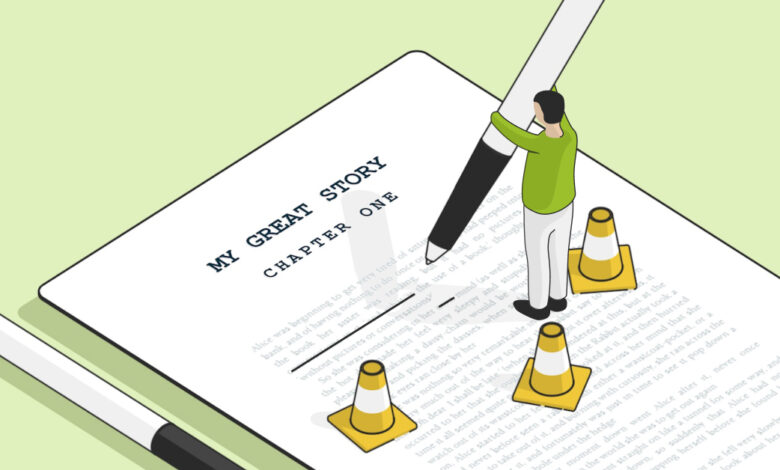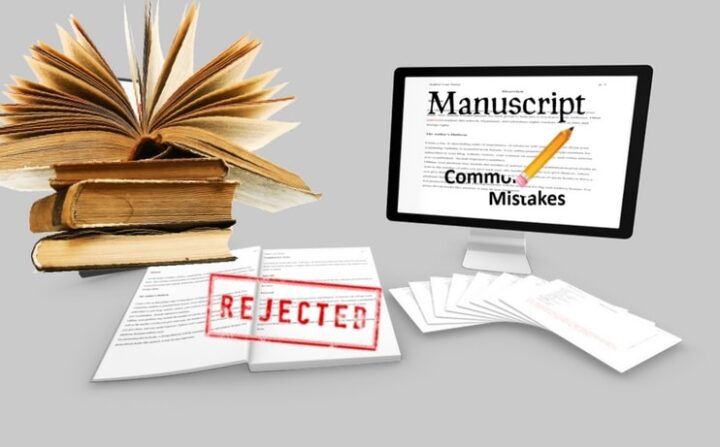What Should You Do Before Giving Your Book for Editing?

Your book is your baby. Whether it took you over a year, a month, or even two weeks to nurture it, you poured your heart and soul into your masterpiece. At the end of the day, it’s all your hard work.
While the hardest phase may have passed, the job isn’t quite done yet. You’ve put your pen to paper and done all the writing. But there’s still much to be done: editing and proofreading your book. Editing is important for your book, in order to make it error-free and to give it some semblance and structure. But what should you do before giving your book for editing? Let’s take a look!
1. Set aside your manuscript for a few days

When you’ve finished typing out your manuscript, set it aside. Give the book a breather. Four days, a week, maybe even a month, if time permits.
Having worked on it for a long time, you’re probably (nay, definitely) familiar with it inside and out. But, believe it or not, that doesn’t necessarily make you the best editor for the piece. In fact, it’s easier for the brain to bypass minor errors like typos and missing punctuation, precisely because you’re thinking about the book from a bigger perspective.
This break is crucial because you want to re-read your manuscript with a fresh, more detailed-oriented outlook. Putting the book aside for some time will help you forget everything you’ve written so that when you do come back to self-edit, the book almost seems as if someone else wrote it.
2. Search for overused words in your book

Every writer has their favorite words, of course, but it gets a bit much if they’re used in almost every other sentence!
Think from the point of view of your reader. Don’t you think they’ll slam the book on the table out of frustration? Won’t you do the same if you were reading a book that is thoroughly repetitive in its prose?
Granted, your editor will definitely help you locate and eliminate these repetitions, redundancies, cliches, and so on. But even before you send them your draft, it’s recommended that you a round of elimination yourself, so that your editor doesn’t give you the stinky-eye for overusing words.
3. Run a cursory spell check using an online tool

Even after that break, if you’re not able to spot the errors in your manuscript, take some help.
You can start with the in-built spell-checker in your word processor. You can also take the aid of well-known writing assistant tools like Grammarly and ProWritingAid. They are helpful in identifying minor technical errors like spelling mistakes, grammar errors, punctuation, and so on. They’re not the most reliable for reviewing structure, pacing, and other big picture aspects of your writing, but they’re good enough for a cursory round of editing. More than anything else, it will save your editor the hassle of doing the minutest of checks!
4. Get beta readers to read and critique your book
You’re probably a fantastic writer, but that doesn’t make you immune to bias. Writers sometimes fall in the trap of misjudging how their prose reads to their audience. While writing is certainly a creative process of self-expression and artistry, it’s successful only when their prowess reaches their audience.
One of the most effective ways to find out if your book reads well is to give it beta readers. Beta readers, as the name might suggest, are testers who give you valuable feedback on your writing. They’re not editors, so they may not be able to give you constructive steps on how to improve the book. Think of them as sample readers, a representation of your average reader.
You can put out a call for beta readers on your social media or writing forums/communities.
5. Format your manuscript properly

The publishing industry is incredibly competitive, whether you’re going for self-publishing or traditional publishing, it’s best to give your manuscript a polished look from the get go! One simple thing you can do to make your manuscript professional is to format it well. This means taking care of font size and spacing, overall layout, margins, indentation, pagination, chapter breaks, and so on.
Formatting your manuscript makes it easier for beta readers to consume, and editors prefer industry-standard formatting, which allows them more time to edit your actual words instead of tweaking your formatting. If you’re submitting your manuscript to a traditional publishing house, formatting also helps in giving a good impression.
6. Don’t try to overedit
It’s understandable that you want your book to be perfect, but in that process, don’t raze to the ground what you’ve worked so hard to build. Leave the deeper editing to a professional editor, and you focus on superficial editing (grammar, spelling, and punctuation). The professional editor, as an expert in their field, will have a far more nuanced and objective approach to editing your manuscript. They will take care of ensuring that your book reads well, the narrative and the pacing are engaging, and there are no clarity issues.
Your book will come out squeaky clean once you send it to an editor and get a ton of valuable ideas, feedback, and opinions on it.
We hope that these tips give you valuable insights on what you should take care of before submitting your book manuscript to a professional editor. Follow these steps and rest assured that your beloved book will see the light of day!
If you’re on the hunt for professional editors, visit www.papertrue.com.
Good luck with your book, and happy writing!
